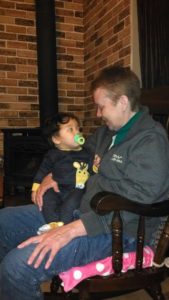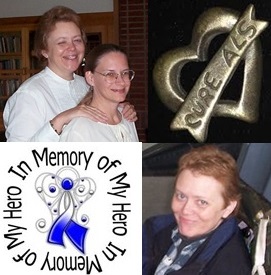When you hear an ALS diagnosis, once you get over the initial shock, you start to think about everything on your bucket list that you might be able to complete, and everything that will never happen. Some people have enough time, slow enough disease progression, to check things off of their bucket list. For others, the progression is so fast, that the Bucket List remains unchecked.
The summer before her diagnosis, July 2013, we drove down to California for my parents’ 50th Anniversary. Fortunately, driving meant we got to see a few things Mary said she always wanted to see. We drove out of our way so that we could drive through the sequoias. We saw the Golden Gate Bridge and drove over it. We stopped at the Jelly Belly factory. She loved it.
After diagnosis, some friends and I planned a weekend getaway at the Oregon coast for February 2014. I had a gut feeling it would be her last trip to the coast – her last trip anywhere. It was a difficult, challenging, and uncomfortable trip for both of us. She could no longer safely walk, so she spent most of the weekend in a stuffed chair, hooked up to her bipap, looking out the sliding glass door at the pond, watching movies and chatting a little. She was pretty quiet. She wouldn’t let me take any pictures of her. At the time, I think she was upset that I had dragged her out there. But before we left, we drove along the coast where she could see the ocean out of the car window one last time.
A few months later, my parents came up for a visit, and I rented a wheelchair van so we could take her a couple of places in the power wheelchair. We went to a local nursery so she could wheel through the plants, looking at the roses and herbs like we had done a hundred times before. But she wouldn’t buy anything. We also took her to the Evergreen Aviation and Space Museum. She got to go into the Spruce Goose, and look at old planes and motorcycles. She got to see part of the Berlin Wall, and chat with my dad about the space program he had worked in while looking at planes he had worked on. She had always loved aviation and space vehicles. She pushed herself and we stayed almost all day, despite the heat. It was worth every moment to see the joy on her face.
That was the last place she went, other than to medical appointments. So many things on her bucket list that we never got to do.
You never know what life will bring to you. Take the opportunities to fulfill your dreams while you can. Take the trip. Go to Disneyland. Swim with Dolphins. Skydive. Whatever you “always wanted to do” – do it!



